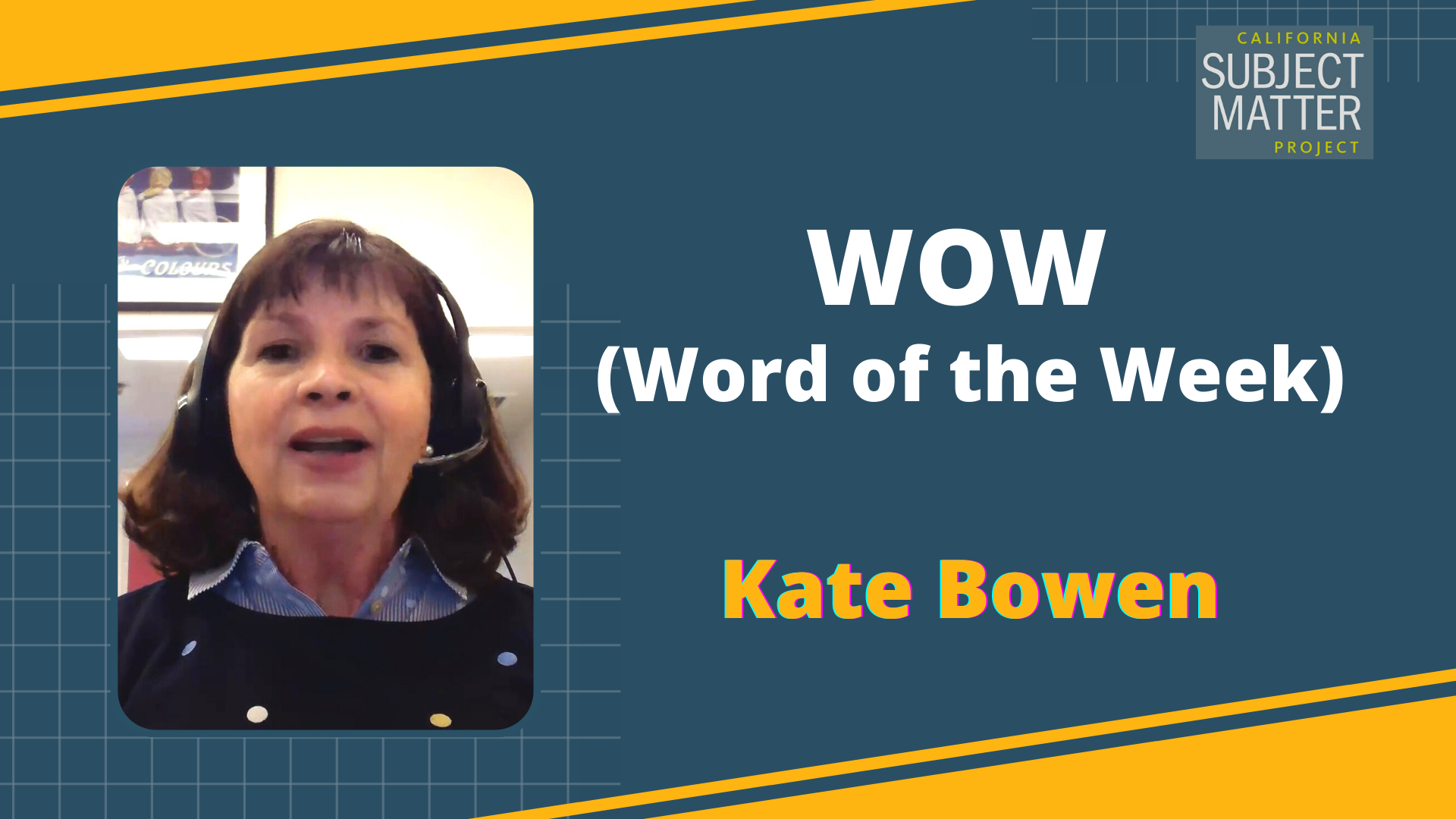Watch the Video
Presenter
Jenée Fawson is a Spanish teacher and chair of the World Languages Department at Westmont High School in Campbell, California.
Transcript
My name is Jenée Fawson. I’m a Spanish teacher at Westmont High School in Campbell, California, where I’m the chair of the World Languages Department. I’m also with the California World Language Project.
Let me ask you a question. Have you ever been asked to step in for a teacher and nobody can find that lesson plan? What about a lot of extra time left at the end of a lesson? Perhaps you’re teaching at a school with long block periods of 90 minutes and the lesson that’s been left, such as reading chapters in a novel or watching a film just isn’t enough to keep students engaged and accountable. Let me tell you, your new best friend in these situations is going to be The One-Pager.
As the name implies, it’s a single sheet that students create to visually share key ideas and information from what they’ve learned. They use symbols and important words to clearly and concisely share their most important takeaways from the lesson. What’s great is it is enjoyable for us to review, not dreading grading it. And there’s an easy rubric that you can provide, so that students can really meet those expectations.
This is a versatile tool that you can use following reading of text, viewing film, listening to songs… You’ll hear me throughout this talk to refer more to text, but just know this can be applied to any content area.
This one pager strategy works for middle school and high school, and can be adapted to the higher grades in elementary school as well, such as fifth grade.
To get started with The One-Pager, simply pass out a piece of regular old white copy paper. For a little more structure you can print off one of the templates provided in the resources.
Next, provide students with some really simple basic instructions of what you would like them to include on the one pager. This is going to be very easy for you because you can pick and choose from the chart in the how-to in the resources, and you’ll be able to choose what’s most appropriate for the lesson that you’re doing that day.
Generally, to get started you’ll want students to create a border, usually with the key themes of the text. You might have them select five new vocabulary words that they accompany with images. You might want them to pull out three quotes that had resonation with them, with the page number and the speaker.
You might also have them discuss the setting or the main characters. You can pick and choose what’s most relevant and what’s great as students can show a lot of creativity in what they then select.
Something helpful to know about one-pagers, when you’re getting started, is that it is super easy to differentiate and modify for language learners and students with special needs. One way you could do this is select fewer elements to be included in the one pager. So instead of four or five, you might narrow that down to two or three. You could alternatively keep the four or five elements, but do one or two together as a class and show plenty of examples of one-pagers before they begin. There are a lot of examples provided in the resources, so you don’t need to go search for those.
A second tip is, even if you don’t use one of our templates, provide some clear structure about where you’d like students to place things on the page. You can use terminology like: “in the upper right hand corner, I’d like you to deal with the character analysis. Right on the bottom left hand corner please indicate the setting, whether you’re referring to the time period or physical location of the book.” Providing these structures really helps students get started and not be intimidated by the blank page. If you have art supplies that’s great, but not necessary.
And you could always do a gallery walk, at the end of the period, to showcase student work.
To sum up, this The One-Pager is a super versatile activity. It can be applied to text, video, song, and film. There’s almost no preparation involved for you. It really fosters student creativity and autonomy and showcases their learning and understanding. This is a great activity to keep in your back pocket, and I hope you enjoy it as much as I do. Adios.
Accompanying Materials & Resources
- Quick Guide: The One-Pager Activity (PDF – 1 Page)
- The One-Pager Activity – One-Pager Templates_Instructions_Rubric (PDF)
- The One-Pager Activity – One-Pager Rubric – editable (Google Docs)
- The One-Pager Activity – Song One Pager Template (Google Docs)
- The One-Pager Activity – One-Pager Directions (Google Docs)
- The One-Pager Activity – How To Create a One-Pager (Google Docs)
- The One-Pager Activity – Graffiti pages instructions handout (PDF)
- The One-Pager Activity – Character Autopsy Mini-Project (Google Docs)
- The One-Pager Activity – Students Examples (Google Slides)



